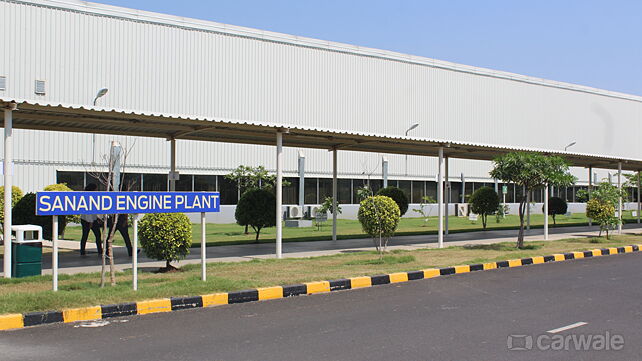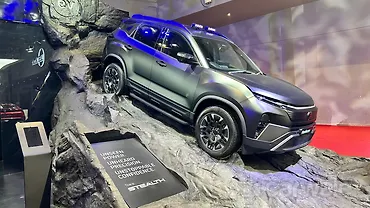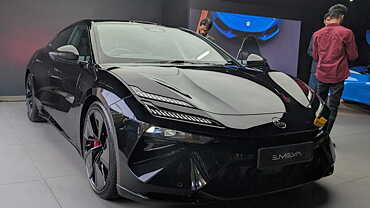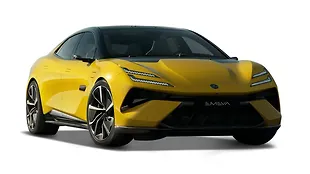
Ford will bring a new petrol engine to the Indian market later this year. This time around, it’s a 1.5-litre three-cylinder unit which will debut in the new Ford EcoSport, also scheduled to be launched at the same time. This new engine is also expected to replace the four-cylinder unit that is offered in the AT variants.

To unveil and show us the new engine, Ford took us to their plant in Sanand, Gujarat, showed us the engine and then also gave us a tour of the assembly plant. Here are some glimpses from our tour of the engine plant. We have spoken in detail about the new engine and here is the story.
1. The plant is located in Sanand on the outskirts of Ahmedabad City and is their second facility in the country. In terms of models, this plant currently builds the Figo and Aspire but it will eventually also start producing the new EcoSport. It is capable of producing 2,40,000 cars annually.

2. The engine assembly plant in Sanand builds both diesel and petrol units and is capable of producing 2,70,000 units a year. It’s an ISO Class 8 cleanroom standard facility and is divided into two engine assembly sections and one testing section. These are modular assembly lines and both diesel and petrol can be produced one after the other.

3. The assembly line is a mixed bag of human efforts as well as robots working side-by-side to build the engines. While human hands are involved in tasks like overall construction, the robots are used for very specific purposes like precision-welding as well as torqueing of certain bolts on various parts of the engine.

4. With so many robots, the entire assembly line is controlled centrally, right from the selection of the engine block all the way to the attachment of fly wheel and manifolds. Ford has said that the assembly is tracked in such a manner that every engine component is tested and tracked enroute to it being brought to life.

5. Given how engines work, the whole assembly process goes from inside to outside. During the time we were at the plant, we followed almost the same engine right from its cylinder block days all the way to being filled with petrol and being fired up for the very first time since being assembled.

6. Once the engine had completed the short block stage, it was given a test for the components that had been fitted and was then moved to the long block assembly line. Here, the outer components like the twin camshafts and integrated exhaust manifold are fitted to the block.

7. Once the engine has been assembled, piping et al, it is put through an array of further tests including some rotations without firing up. The engine is now a whole metal and is not too far away from being the heart for a new Ford in a variety of countries on both sides of the dashboard.

8. The engine block now exits the main plant section and moves to an annex where the hot test takes place. It is here that the engine is supplied with fuel and fired to the beat of a three-pot motor being audible and in action for the first time. It is revved up to 2000rpm as a part of the test.

9. Henry Ford, the founder of the American automaker, is the creator of the auto assembly. Literally, he is the big daddy who came up with the process that forms the backbone of the auto industry today. He set the standard for what needed to be done by creating and building the Model T sedan.

10. A descendent of the original Detroit based Ford assembly line was in front of me, churning out engines that will power Figos, Aspires and of course, the EcoSport. Of these, the latter will debut in a new avatar later this year for the Indian car market.
Photos: Bilal Firfiray



































